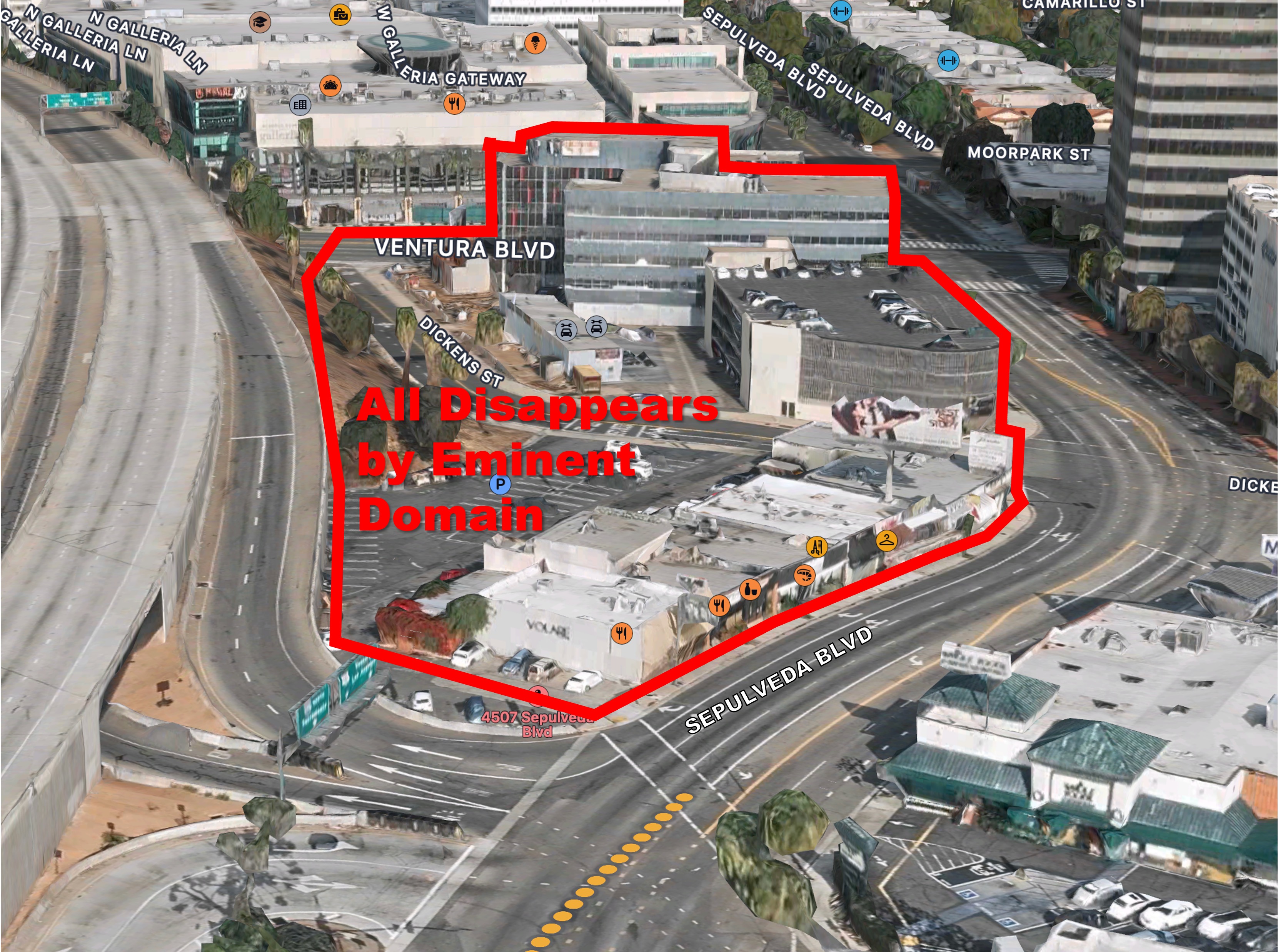Comments
[This is the thirteenth article in a series examining whether Metro can be a trusted steward for the Sepulveda Pass Transit project.]
LA TRANSPO - The eleventh of my 20 questions to Metro CEO Stephanie Wiggins asked: “Why has Metro always disingenuously responded to potential project eminent domain questions by saying that nothing has yet been decided? This is an affront to worried residents and businesses – and blatantly misleading. Everyone understands that Metro has made no final eminent domain decisions, but Metro’s concepts have always had obvious eminent domain consequences. For example, Metro’s original HRT3 concept that morphed into Bechtel’s current Alternative 4 has obvious eminent domain impacts near Sepulveda Blvd and Valley Vista Blvd. Metro highlighted these impacts at its July/August 2019 public meetings in a Metro rendering [shown at top of this article] where 150+ houses, condos, apartments, and businesses disappeared and were replaced by elevated tracks and an above-ground station. In response to a resulting audience question on eminent domain, Metro STCP Project Manager Peter Carter responded that Metro had not yet thought about eminent domain (see video clip). Yet Metro had thought enough about it to tell its artist what to draw for the rendering.”
Metro never addressed my eminent domain example and instead provided their typical kick-the-can-down-the-road response: “Metro understands that potential property acquisitions can be concerning to local residents. However, the exact alignments have not yet been determined, and therefore, any potential property impacts or potential property acquisitions are not certain. Property acquisitions and impacts are determined during the environmental review process, which is not yet complete. Often property acquisitions are a required element of transportation projects in urban areas but one that Metro staff works to minimize. Metro’s Property Acquisition Fact Sheet has been shared at all in-person community meetings and links to the fact sheet have been provided at virtual community meetings. The fact sheet is also linked from the project’s website, referenced and linked in our FAQs. The fact sheet is available here.”
Metro’s FAQs are useless, saying only: “No alternative has been selected at this time, nor has any alternative been sufficiently defined to make a determination about property acquisitions.” Metro’s Property Acquisition Fact Sheet “explains the Metro acquisition process in more detail” but never mentions what property might be acquired. The public is worried, and Metro keeps them in the dark.
The large Metro rendering of a Valley “elevated subway” station posted on the wall at their July 2019 public meeting in Van Nuys scared everyone who saw it and raised many questions. Meeting attendees knew what’s at this location today (see below) and saw a five-story office building, three-story parking structure, businesses, and restaurants disappear to make way for an elevated station with zero parking. Further south, it was obvious the elevated tracks removed more than 100 apartments, condos, and houses. These are real, substantive eminent domain impacts.

Metro prepared the rendering but never mentioned it at their July 2019 meeting and didn’t include it in their presentation. When Metro Project Manager Peter Carter was asked about possible eminent domain, he dishonestly said Metro had not yet thought about it. It was dishonest because someone in Metro told an artist what to draw. Almost five years later, I asked the same question and got the same type of answer – because the “exact alignments have not yet been determined”.
Metro keeps repeating the mantra that real answers will come soon – but they never do. The public is only asking for honesty, yet Metro seems incapable of it. There is no reason that Metro cannot tell the public today about potential eminent domain for each of the six alternatives. We have a right to know – now!
(Bob Anderson is a nuclear engineer with 50 years engineering and business development expertise in the aerospace and high-technology sectors. He is VP and Transportation Committee Chair of the Sherman Oaks Homeowners Association. Contact him at [email protected].)
















